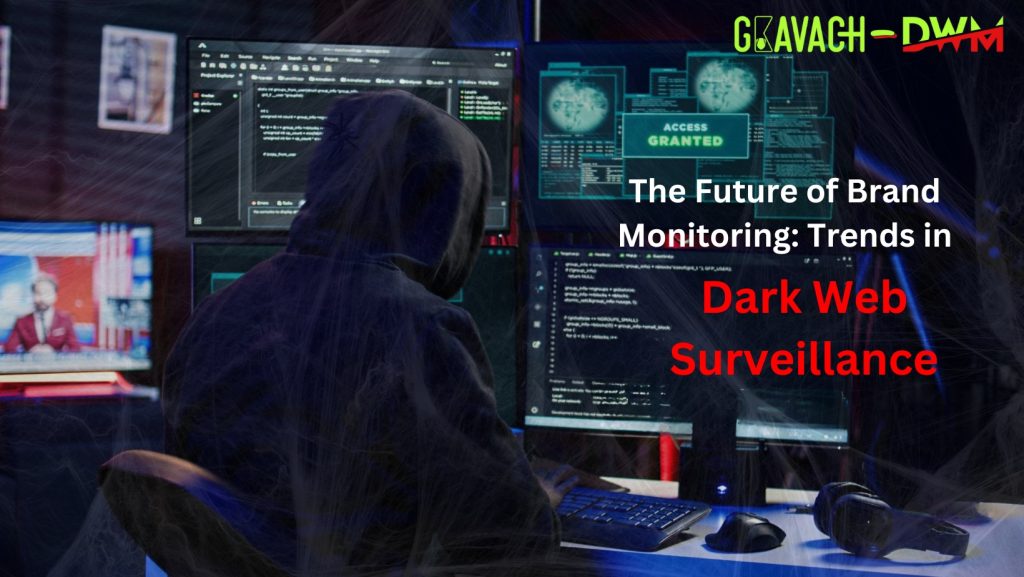
In today’s digital world, protecting a brand goes beyond managing its image on social media or responding to customer reviews. With the rise of cyber threats, it’s essential to keep an eye on the dark corners of the internet – the Dark Web. This hidden part of the web has become a hotspot for criminal activities such as selling stolen data, discussing planned cyberattacks, and pretending to be brands to scam people. As cybercrime continues to evolve, businesses need to stay one step ahead by monitoring their brand’s presence on the Dark Web.
Why Dark Web Surveillance Matters
The Dark Web is not accessible through traditional search engines, and because of its anonymity, it’s where hackers, fraudsters, and other criminals often exchange information. For businesses, this means that sensitive data like customer information, trade secrets, and even intellectual property could be for sale without them even knowing. By monitoring the Dark Web, companies can detect these threats early and take necessary actions before they result in damage. Brand monitoring in this hidden part of the web ensures that any potential reputational or financial harm is caught in time.
Key Trends Shaping the Future of Dark Web Surveillance
- AI-Powered Threat Detection: As cyber threats become more sophisticated, so does the technology used to detect them. Artificial intelligence (AI) and machine learning (ML) are playing a bigger role in Dark Web monitoring. These technologies can sort through massive amounts of data, identifying suspicious activities and trends faster than any human analyst could. AI can flag potential threats by learning from past attacks and patterns, making it easier for businesses to respond in real-time.
- Integration with Broader Cybersecurity Strategies: Dark Web surveillance is increasingly being integrated into a company’s overall cybersecurity framework. This means that businesses are using the insights gained from monitoring the Dark Web to strengthen their firewalls, update their antivirus software, and refine their incident response plans. By combining Dark Web intelligence with other security measures, businesses can build a stronger defense against cyberattacks.
- Focus on Brand Protection: While earlier efforts focused on monitoring stolen data, there is now a shift towards brand-specific surveillance. Companies are increasingly monitoring for fake products, fake websites, and fraudulent use of their brand name. This ensures that cybercriminals don’t damage their reputation or trick customers into buying fake goods or falling for scams.
- More Accessible Tools for Businesses of All Sizes: Once reserved for large corporations with big budgets, Dark Web monitoring tools are becoming more accessible to small and medium-sized businesses. Thanks to cloud-based solutions and affordable subscription services, even smaller companies can keep an eye on their digital footprint. This is a crucial development since cybercriminals often target smaller businesses, assuming they have weaker defenses.
- Collaboration Between Businesses and Governments: With the increasing severity of cybercrime, governments around the world are taking more interest in helping businesses protect themselves. Public-private partnerships are emerging to tackle cyber threats, particularly in monitoring and regulating the Dark Web. As this collaboration grows, businesses will benefit from shared intelligence, enhanced tools, and better protection laws.
Preparing for the Future
Brand monitoring in the Dark Web is no longer just a reactive strategy – it’s becoming a proactive approach to protecting a company’s reputation, data, and customers. As the tools and techniques evolve, businesses that invest in Dark Web surveillance will be better equipped to fend off attacks, safeguard their brand, and stay ahead of cybercriminals.
In the future, we can expect even more advanced technologies, greater integration with cybersecurity strategies, and wider accessibility of Dark Web monitoring tools. Businesses that embrace these trends now will be better prepared for whatever cyber threats lie ahead.